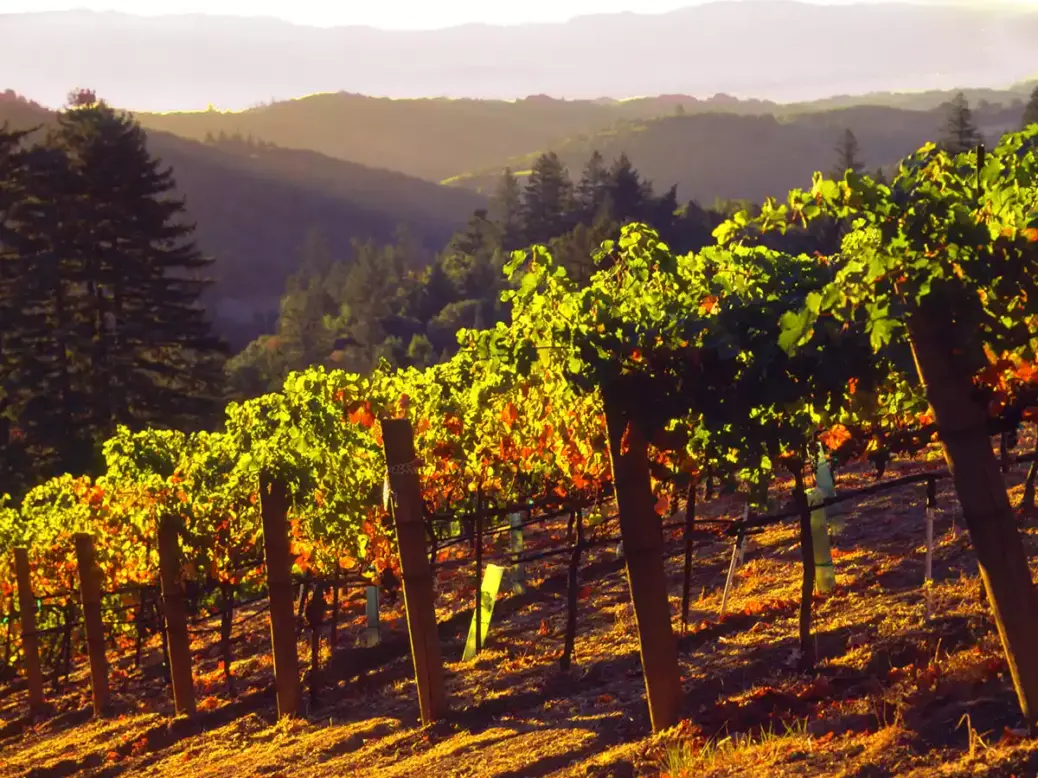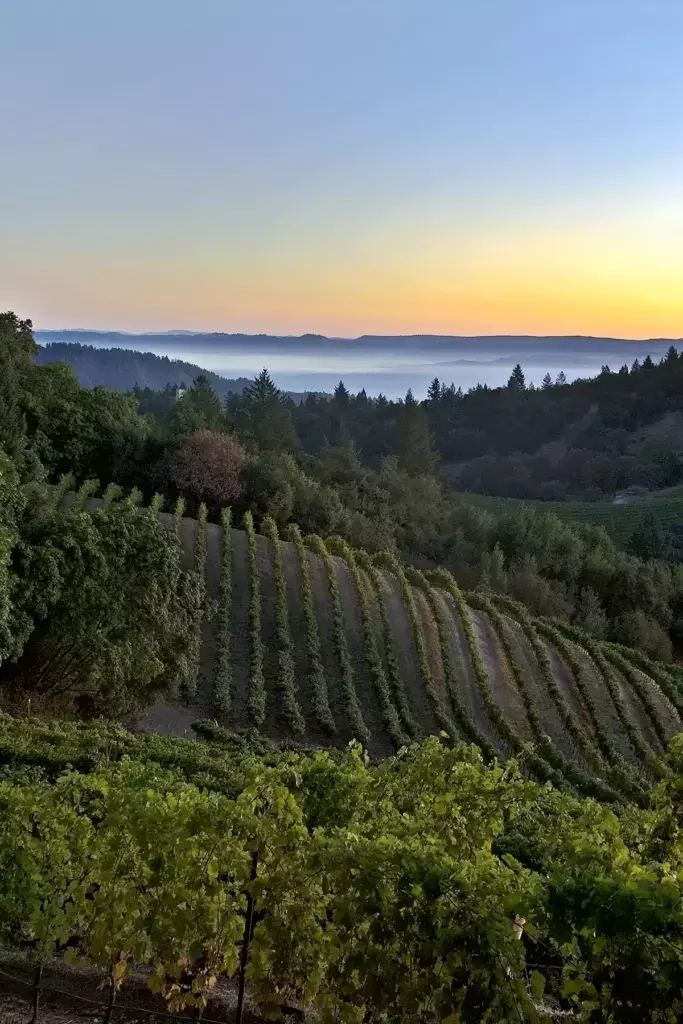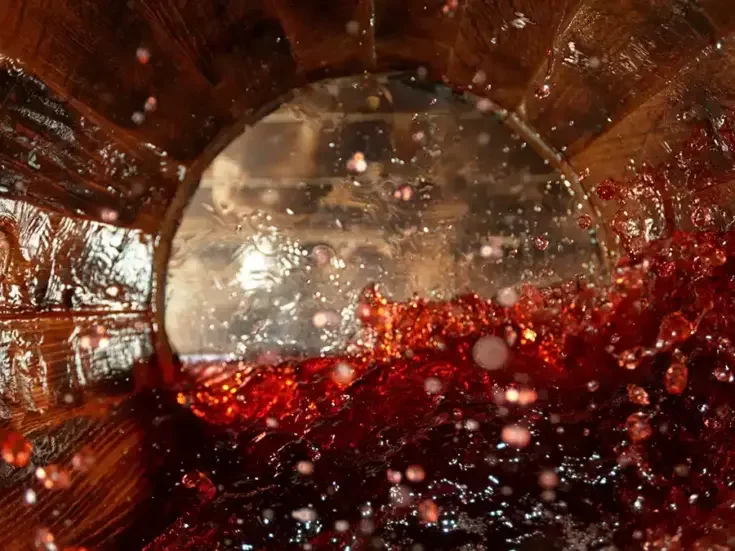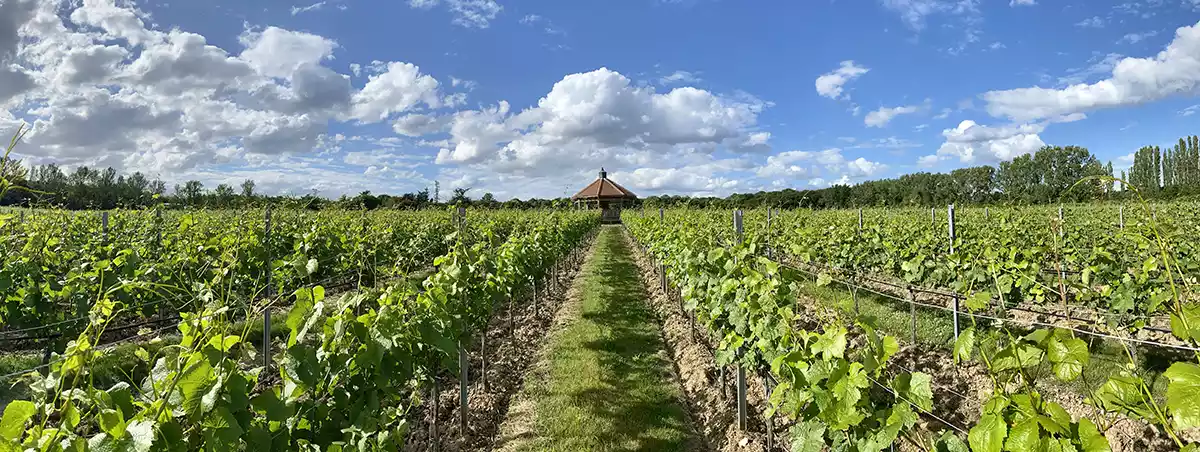
The drive to the Mount Veeder Winery is a journey into the past of Napa County. “It still has the feel of the valley from 30 or 40 years ago,” says newly-appointed winemaker John Giannini, “even at its 50th anniversary.”
Less than 30 minutes from downtown Napa, once the road begins ascending, the town gives way to bucolic horse and cattle farms. Even vineyards are sparse—and scattered; the 16,000 acres (6,400ha) of land within the AVA are home to only 1,000 acres (400ha) of vines. Of those, Mount Veeder Winery owns about 40 acres (16ha), divided among three ranches. Michael and Arlene Bernstein moved up from Berkeley in 1964, part of that era’s “Back to the Land” movement, and bought what would become the Winery Ranch in 1964. They added another piece in 1969, and began planting vines the following year. “It was a prune farm and they began slowly converting it, an acre at a time,” Giannini says. “It was very slow going.”
The Bernsteins had both taken part time jobs as tour guides at Robert Mondavi’s tasting room, and he was encouraging. “I think he was very influential in convincing them to make their own wine, not just grow grapes and sell them.” The first vintage was 1973, so made with very young vines, and amounted to about 375 cases of varietally-labeled Cabernet Sauvignon. It was also the first wine to carry the name of the region on the label; it would be 20 years before Mount Veeder became an AVA.
At six acres, the Winery Ranch is the smallest of the three; the Bernsteins purchased the Rosenquist and adjoining North Ranch sites from Franciscan Winery in the late 1980s, and those sites amount to 15 acres (6ha) and 19 acres (8ha), respectively. The original ranch is the lowest, just above the fogline, with the others ascending to as high as 1500ft (460m).
The fogline marks the border between the valley and mountain, in growing terms. Above it, neither the daytime heat nor the overnight chill are extreme; the valley floor experiences diurnal shifts that are nonexistent here. “It can be 100°F (38°C) on the valley floor but it’ll be eight to ten degrees cooler up here. There’s more sunlight but less heat. It’s a more even growing cycle.”
The difference is clearly visible in the grapes, and in the wine. “You don’t get like the dimpling or raisining as much as the valley floor, “Giannini says. “The grapes are just visually in a little better shape. They’re not as beat up as they sometimes are on the valley floor. So you get true phenolic ripeness without being super high brix. And we have good acidity and good freshness, but with bold aromatics and great color, without having to overextract.”

An end to Mount Veeder Chardonnay
Mount Veeder Winery passed into the hands of Franciscan Estates in 1989, and ten years later became part of Constellation Brands. During that time production expanded, with valley floor fruit supplementing the estate’s production. At 50, Giannini says the focus is coming back to those three vineyards. 2021 is the last vintage of Chardonnay; the estate has never been home to white grapes, so the Chardonnay had always been sourced from the valley floor and Carneros fruit. The Napa Valley Cabernet Sauvignon will still include some valley fruit, but production will be smaller and only include fruit from what they consider to be their best growers.
The all-estate, Reserve Red will benefit from a number of changes in the three ranches. A replanting project began five years ago, starting from the heights of The Rosenquist ranch; it was replanted in the late 1990s, but a number of the vines had become virused. They’re introducing new rootstocks and two new clones and matching them carefully to the soil types and exposures.
The estate’s sedimentary and volcanic soils are already shallow, and erosion, especially after heavy winters like 2023-24, is a serious problem. Much of the replanting is designed to provide added bulwarks against soil loss, reinforcing terracing and adding in culverts and drains. It’s an expensive endeavor: Giannini says the cost of planting in the mountains can be as much as two times what it is on the valley floor, due to the slopes and ruggedness of the terrain; similarly, yields of two-and-a-half tons per acre are half that typically found on the valley floor.
“It’s all the un-sexy stuff,” Giannini says. “For example, there’s a pond on the original Bernstein property and they had it relined. It’s full now, and we’ll lose some of that water to evaporation, but we won’t lose it to drainage anymore.” Giannini says water retention may be a bigger problem on the estate than heat as the climate changes. Cover crop is helping, keeping the ground cooler as well as holding it in place—another tool in the battle against erosion.
All these changes are for the betterment of the wine, but Giannini has not lost sight of the five decades of history behind them. “One of the most important things for me is to honor the Bernstein’s original vision. With the replanting, we’re not creating new vineyards, and we’re keeping the footprint, just with better plant material. It’s going to look the same as it did in the seventies, with some different trellising and more options when the fruit comes to the winery. It was hard to plant then, it’s still hard to plant now. Not much has changed, and that’s part of the beauty of Mount Veeder.”







